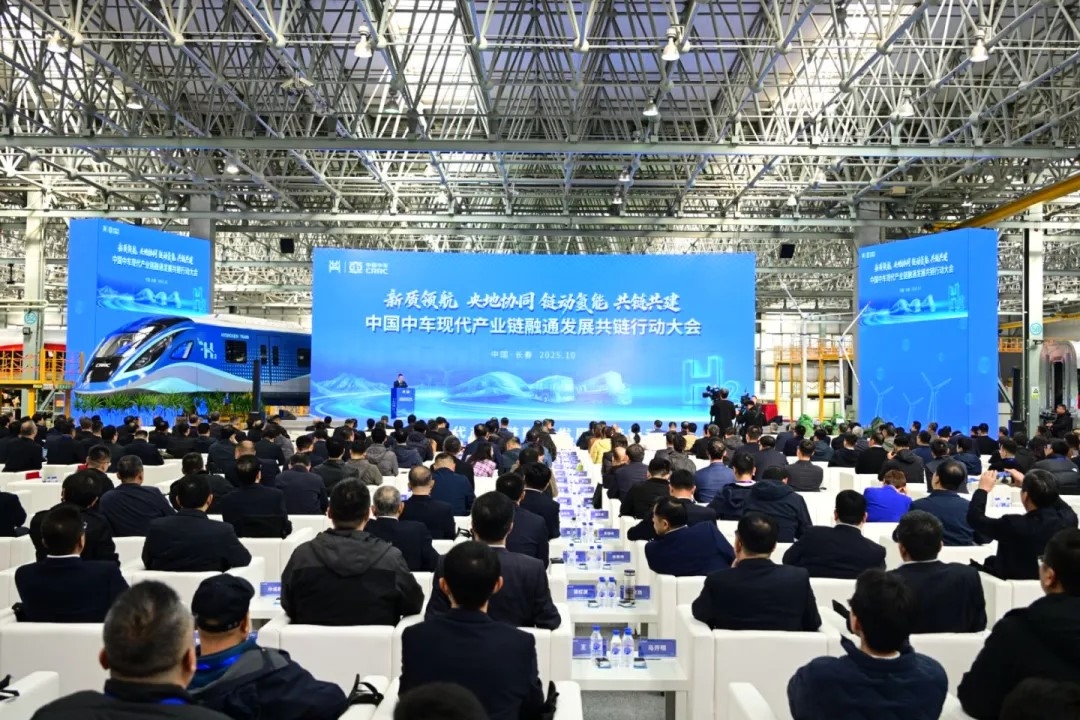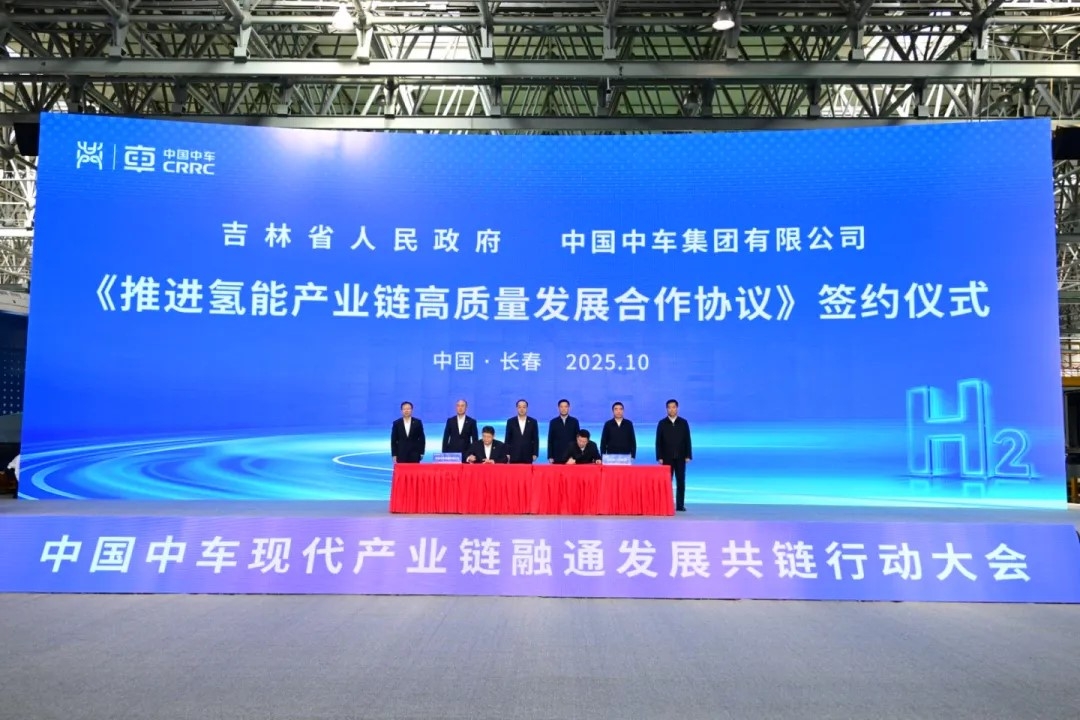CRRC held the Modern Industrial Chain Integration and Co-Building Conference in Changchun on October 16, focusing on collaborative development across the rail transit equipment, clean-energy equipment, and hydrogen-energy industrial chains.

The event brought together representatives from the Jilin Provincial Government, SASAC, the Ministry of Industry and Information Technology (MIIT), the National Railway Administration, and CRRC leadership.

CRRC noted that it is advancing its “dual-track, dual-cluster” development strategy and strengthening cross-chain collaboration to support the building of a modern industrial system. Representatives from Jilin Province, SASAC, MIIT, and the National Railway Administration expressed support for deeper innovation and industrial-chain integration with CRRC.
The conference featured multiple cooperation signings.

Witnessed by senior representatives from Jilin Province and CRRC, the Jilin Provincial Government and CRRC Group signed the “High-Quality Development Cooperation Agreement for the Hydrogen-Energy Industrial Chain.”
At the signing session for hydrogen-energy application projects, CRRC Changchun Railway Vehicles Co., Ltd. signed two additional agreements with partners: the “Hydrogen-Powered Intercity and Urban Rail Train Cooperation Agreement” and the “New Monorail System Technology Innovation Project Cooperation Agreement.” As the lead enterprise, the company also announced the formation of the Jilin Hydrogen Energy Industry Science and Technology Innovation Consortium together with 11 enterprises, universities, and research institutes.
CRRC and its industrial-chain partners also signed the “Seawater In-Situ Hydrogen Production Industrial Chain Cooperation Agreement.”

The conference also held a dedicated signing session for co-building projects. A total of 57 projects under the “Seven Focus Areas” were collected, involving 79 partners from CRRC companies and external organizations. The projects covered multiple categories, including supply-demand matching, collaborative manufacturing, innovation cooperation, resource sharing, industry-finance integration, and central-local cooperation.
To align with SASAC’s requirements to make full use of the co-building service platform and publish supply-demand lists and partner “white lists,” the conference released CRRC’s Industrial Chain White List, which includes 45 private enterprises, 13 national “little giant” specialized and innovative firms, and 2 green-factory (green supply-chain) enterprises.

Ahead of the conference, CRRC unveiled China’s first hydrogen-powered cultural-tourism train, the “Hydrogen Spring,” marking a new milestone in green rail transit.
Participants also visited the exhibition on CRRC’s industrial chain integration efforts. In the afternoon, CRRC hosted three parallel sessions on technology innovation and localization, application-scenario supply-demand matchmaking, and industrial and supply-chain development, further deepening collaboration across the sector.
The conference brought together representatives from provincial authorities, central SOEs, universities and research institutes, industry associations, user organizations, supply-chain partners, and national and regional media—demonstrating broad support for advancing modern industrial chain integration and the development of new productive forces.